2022 Week 7: Government/Policy
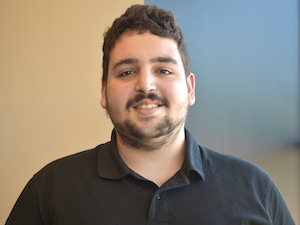 Kerim Bali | Office of Councilmember Mark Conway
Kerim Bali | Office of Councilmember Mark Conway
This was the penultimate week of my internship in the Office of Councilman Conway, and I’m honestly shocked at how fast this summer went by. I spent a lot of this week working on my end-of-the-summer project. Our office has this project for all interns, and it’s a way to conduct individual research and analysis while learning more about a topic or a niche issue that particularly interests you. The goal is not to necessarily start out the internship knowing the topic, but more so discovering an area of interest along the way. The project should ideally end in suggestions on how the office can work on and improve this issue. So while the project can be about Baltimore as a whole and doesn’t have to only be regarding the Councilman’s district, it is important for it to be relevant and fall under the City Council’s purview.
I really wanted to focus on mass incarceration and the criminal justice system in Baltimore, for three reasons. First, I have background interning for a nonprofit that works on this issue. I thought that using the knowledge and experience I have from a nonprofit and brining it to governmental work would be a great intersection. Second, Councilman Conway is chair of the Public Safety Committee. He has been working on various legislation on criminal justice throughout the time I’ve been there. Finally, while I was leaning towards this topic, the CIIP Bites presentation of the week was on Baltimore’s mass incarceration epidemic, which sealed the deal that this was my topic of choice.
Concurrently, one of my tasks for this week was taking notes on the Public Safety Committee hearing on the squeegee problem. After weeks of answering to phone calls and voicemails about citizens who were angry and afraid about this issue, watching the hearing was very interesting. The hearing featured many different agencies, and really brought forth the nuances of the issue. I would never say anything to the affect of “constituents should stop complaining” – because I believe that they have every right to expect more from their government. However, I will admit that the hearing and the calls I’ve been answering had a significant disparity when it came to the complications of the issue.
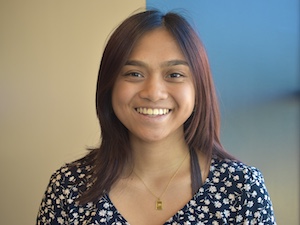 Mikayla Chua | Office of Councilmember James Torrence
Mikayla Chua | Office of Councilmember James Torrence
This week, our office traveled to the Woodberry community twice. The first time for the community clean-up and the second time for canvassing. As I mentioned before, this neighborhood had been facing an issue with lead paint chips falling onto the community from a tower.
Something funny and unexpected I found myself enjoying is the commute. Multiple times during my internship, our office has had to go directly out into a neighborhood that we were servicing, mostly for canvassing and going door-to-know with flyers. Those days, I feel more in tune with the community as I got to talk to constituents face-to-face rather than through a call or email. I also get to see what the neighborhood looks like and see the issues — from overgrown yards to abandoned vehicles. Figuring out how to take public transit to the neighborhoods also helps me feel more connected in the city, by understanding its resources and how to navigate Baltimore City. I also was traveling to parts of Baltimore that I had never been to before or would otherwise have no reason to travel to during the school year.
The first time our office traveled to Woodberry, I got to see the lead paint chips in person. I also got to see Department of Public Works staff and its volunteers who were helping out with the clean-up. We had trash bags, gloves, and and picker-uppers and got to work in teams taking on Upper and Lower Woodberry. Looking up from our place in Hooper & Rockrose Park, I saw the notorious red TV tower high in the sky.
Next, we had to canvass door-to-door to post hundreds of flyers about the community meeting concerning the issue so that the community could discuss with the Council any concerns and comments. I got to drive around with the Councilman around Upper Woodberry, where we saw Clipper Mill, a very wealthy, beautiful community. The wealth of the community naturally brought up the topic of money, which lead to the topic of funding, as my co-intern asked how funding a campaign works for the Councilman. The Councilman then told us the racial disparity in funding between white and black politicians in Baltimore–a difference of about hundreds of thousands of dollars. And most of his funding came from family and friends. I am further disheartened but inspired by the hard, genuine work for political change and care the Councilman and his office put in, even in the face of structural inequities with the system working against him. I will take this inspiration with me wherever I go and remind myself of this whenever I feel discouraged by politics or just the world around me.
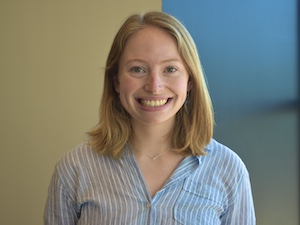 Sigrid Edson | Mayor’s Office of Immigrant Affairs
Sigrid Edson | Mayor’s Office of Immigrant Affairs
One of the most interesting things that happened at my placement this week was a meeting I attended between the MIMA team and another organization that does work for the city. This organization’s goal in meeting with our team was to learn how to better serve immigrant populations and to get a window into MIMA’s engagement and language access work. This is similar content-wise to a lot of meetings I’ve attended — MIMA’s role is to expand the capacity of other organizations to provide services to immigrants, so there is plenty of interfacing with outside groups and sharing expertise. However, I realized at this particular meeting that the group we were meeting with was the first group that didn’t seem like… experts.
I don’t mean this in a negative way. What I mean is that I’ve spent this internship surrounded by people who are immersed in work with immigrant communities, who know what the major areas for improvement are, and who share a particular way of talking about those communities and issues. The meeting I mentioned above was the first time I truly felt this was not the case. I could sense the other organization’s director searching for words, getting certain things slightly wrong, then profusely apologizing when realizing they hadn’t used the “right” jargon.
And there’s nothing wrong with that! I’ve definitely had moments, especially this summer, when I’ve tried to express something as respectfully as possible and felt like I made a mess of it. But you don’t have to know how to talk about something in order to engage with it, there’s no universal standard for speech that applies in all settings, and there’s nothing wrong with just expressing something authentically, the best you can. There are wrong answers and more or less precise answers, but no universally correct ways to refer to people and their experiences. It’s good to show up whether you know what to say or not.
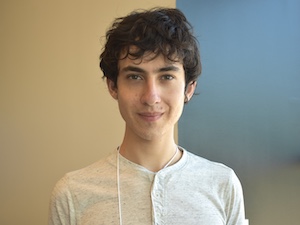 Carlos Gamboa | Office of Councilmember Zeke Cohen
Carlos Gamboa | Office of Councilmember Zeke Cohen
Southeast Baltimore is home to a thriving Hispanic population, mostly hailing from Central America; however, their voices often go unheard in local government. In order to ensure that the city council is aware of their concerns, Councilmember Zeke Cohen’s office, in cooperation with another CIIP partner organization, the Esperanza Center, hosted a listening session for Spanish-speaking District One residents. The initiative was part of a broader series of listening sessions to inform the nascent Southeast Safety Task Force of the community’s chief safety concerns. Two other interns and I are the only staff in the office that speak Spanish, so we were responsible for nearly every facet of the session: one of my colleagues translated the standard listening session program into Spanish, another intern handled the graphic design, and I coordinated the logistics and facilitated the session. The Esperanza Center generously allowed us to use their space, and also advised us along the way and took notes during the meeting.
Five minutes before the session was set to start, it appeared that our efforts had fallen flat: even though we reached out to community associations and posted flyers around the Esperanza Center, only three people had arrived. However, just as the clock struck six, a small crowd of residents filed in, chatting with one another in Spanish. As soon as they took their seats, we got started. The session, which was slated to last an hour, ran thirty minutes over: the participants were eager to share their experiences, perspectives, and hopes.
In terms of safety, the residents overwhelmingly requested better street lighting, more security cameras, and an elevated police presence in their neighborhoods. I suspected, and they confirmed, that this was a product of their experiences in their countries of origin. For instance, an older lady shared that when she was growing up in El Salvador, her family depicted the United States as a safe and stable country, where the rule of law reigns. As such, many of the participants also advocated for stricter law enforcement and harsher sentencing; although I personally do not agree, it is crucial to understand their point of view. Another over-arching issue, though not exclusive to safety, was a dearth of communication between city officials and Hispanic residents. Immigrants are seldom familiar with the resources available to them, such as the 311 system. Many recent Central American immigrants also have limited English proficiency, whereas most city government communications and system are exclusively in English. In fact, even the print format of city flyers limits accessibility: some residents are illiterate and can only be reached through audio and video. These circumstances leave the Hispanic community isolated from, and often completely unaware of, city-wide services and programs, even though many of them would want to participate. One especially intriguing suggestion was for the city to organize block parties with Latin American food, music, and dance. If the event speaks to their culture and heritage, Hispanic residents may be more likely to attend: once they arrive, they could be informed about city services while also feeling more connected to the greater Baltimore community.
As the session drew to a close, I couldn’t help but smile. My dad was an immigrant from Mexico: he came to the United States by himself, and he often told me how difficult it was for him to adjust. Though he was ultimately successful in life, he had to struggle fiercely to get ahead: I couldn’t help but wonder how much easier his experience would have been if the local government made more of an effort to support him. Now that we have the Hispanic community’s feedback, we can begin pushing for the changes they need: I know even the smallest steps can make a world of a difference in their lives.
 Diksha Iyer | Out for Justice
Diksha Iyer | Out for Justice
I could write a whole book about the intersectionality between CIIP placements with just the information that I have learned from my placement this summer! As I have covered in several of my previous blogs, I am placed with Out For Justice, which is a nonprofit that supports formerly incarcerated individuals with reentry. This can be done through legislative advocacy, in which OFJ pushes for policies that adversely affect reentry to be reformed or for new laws to be instated. Another way that OFJ connects with the community is through direct, grassroots services, in which the organization uses its network to offer bail and legal assistance.
I initially thought that my work with OFJ would intersect with my interest in public health and the healthcare system or neighborhood building, the environment, or the arts. However, through experiences such as grant applications, events held with other partners, and everyday conversations with my supervisor, Nicole, I have learned how our mission coincides with the work of other organizations. The Black community is continually criminalized, starting with Black students being treated differently in school, subject to teachers’ racial biases, and more likely to be punished. Mental health issues are used to characterize Black individuals as dangerous, which itself is traumatic and perpetuates harmful stereotypes. Not only are Black individuals criminalized from the moment they start their schooling, but they are also systemically forced into poverty. For example, returning individuals have little to no credit, lack skills that can be applied in the workplace, and endure a stigma against them, which makes it hard to find and keep a job.
These are just two ways in which the mindset of harsh punishment permeates into the lives of all Black people. It appears in the education system, financial institutions, the healthcare system, and more. I have learned that incarceration is not only in prisons, but also in underfunded, undereducated, Black neighborhoods. This is where the prison industrial complex arises from, as well as the school-to-prison pipeline. It then disheartens the Black community and can perpetuate generational trauma.
When kids are given resources to break the cycles of violence in their communities, which is the mission of other CIIP placements, it also contributes to the mission at OFJ, because those kids are less likely to drop out of school and be incarcerated. OFJ also advocates for communities to be able to invest in the infrastructure of their neighborhoods rather than endure increased police presence, which is another focus of come CIIP placements. Essentially, the criminalization of the Black community in Baltimore is tied intrinsically to their healthcare, quality of life, housing, education, and surroundings. OFJ’s mission can tie into the mission of so many other organizations that CIIP works with, because our main focus is to prevent harmful incarceration of the Black community and aid in the reentry of formerly incarcerated individuals. These goals are not isolated, but instead, depend on the presence of mental health resources, healthy relationships with financial institutions, environmentally-conscious neighborhoods (for example, houses that don’t use paint with lead in it), and properly funded school systems.
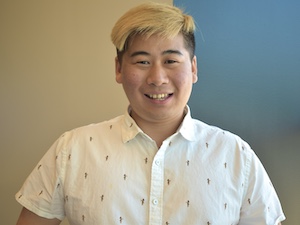 Frank Meng | BCPS Engagement Department
Frank Meng | BCPS Engagement Department
For the City Schools, the summertime is busy for teachers and staff to prepare for the incoming school year, and it is also a hectic time for parents, but for a different reason–it is the only freely opening window for parents to apply for transfer for their child. All the City Schools staff need to serve on the team for two three-hour shifts after the training in early June. I was nervous going into my shifts because I had never experienced the city schools myself, and this was my first time doing parents-facing work, directly interacting with anxious parents who want the best for their children. Different parents have various needs, ranging from better academic resources and more enrichment extracurricular activities to avoiding bullying from their peers. As intersectionality is an analytical framework, a way of analysis as opposed to a multitude of identities, it dissects people’s social status and identities to understand their privileges or the lack thereof. The first few cases are fairly easy in the sense that they are regular inter-district transfers where they only need to fill out a form, and most parents have their material ready. Then a lady with three kids came to my table. She was panicking and did not have the material we needed. She stated renting about one of her boys dropped out of high school and demanded an answer from me. I was a little scared as I had not responded to this situation before. My supervisor came by to “rescue” me and pulled her aside to talk, trying to calm her down and assure her that we would do whatever we could to help her. Turns out the principal at the student’s school wrongly dropped him. She is also a single mother and dealing with many real crises. She is not just a Black mom who wants the best for her children. There are many hardships and other identities that are invisible. In short, we cannot judge her based on our presumption and understanding.
The City Schools’ engagement office is open for partnership, and we are happy to connect with many other non-profit organizations.
